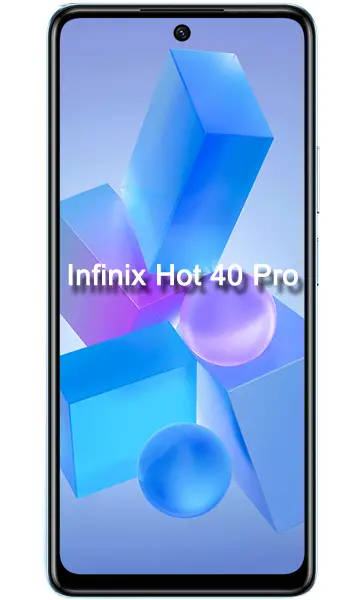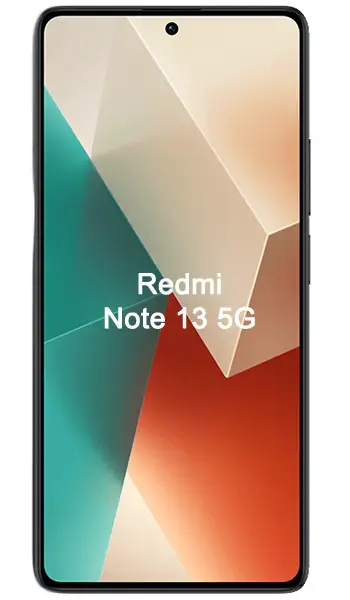Infinix Hot 40 Pro vs Xiaomi Redmi Note 13 (China) Comparison and Differences
Smartphone 1

Infinix Hot 40 Pro
Smartphone 2

Xiaomi Redmi Note 13 (China)
Smartphone 3
Differences between Infinix Hot 40 Pro and Xiaomi Redmi Note 13 (China) - Which to Choose?
Reasons to consider the Infinix Hot 40 Pro:
- Higher RAM options with 8GB RAM available in both storage variants.
- Has dedicated microSDXC slot for expandable storage.
- Higher front camera resolution at 32 MP compared to 16 MP on the Redmi Note 13 (China).
- Features stereo speakers for enhanced audio experience.
- Supports NFC connectivity which may be used for contactless payments and easy pairing with devices.
- Captures higher resolution video with the rear camera at 1440p@30fps.
- Reverse Fast charging capability for powering other devices.
- Available in a variety of color options: Palm Blue, Horizon Gold, Starlit Black, Starfall Green, Free Fire.
Reasons to consider the Xiaomi Redmi Note 13 (China):
- Supports 5G connectivity for faster internet speeds.
- Lighter weight at 173.5 grams compared to 199 grams of the Hot 40 Pro.
- AMOLED display offering higher contrast ratios and 1000 nits peak brightness.
- Slightly more compact form factor due to smaller size dimensions.
- Protected by the Corning Gorilla Glass 5, providing better screen protection.
- Bluetooth 5.3 technology for potentially better wireless connectivity.
- Features dust and splash resistance with an IP54 rating.
- Equipped with an infrared port for controlling infrared-enabled devices.
- Competitively priced at 140 EUR (subject to market and region).
Both smartphones offer 108 MP dual-camera systems, similar GPUs, and comparable performance based on their chipsets. The selection process between them would rely on the user priorities such as the importance of 5G, camera performance, storage needs, and screen technology preferences.
Infinix Hot 40 Pro or Xiaomi Redmi Note 13 (China) Specs Comparison
or
 Common specs
Common specs
| Brand and model | Infinix Hot 40 Pro | Xiaomi Redmi Note 13 (China) | |
| Rating | (+1) | (+0) | |
| Release date | 2023, December 05 | 2023, September 21 | |
| Dimensions (HxWxD) | 168.6 x 76.6 x 8.3 mm | 6.64 x 6.64 x 3.02 in | 161.1 x 75 x 7.6 mm | 6.34 x 6.34 x 2.95 in | |
| Weight | 199 g | 7.02 oz | 173.5 g | 6.12 oz | |
| Body Build | Glass front, plastic back, plastic frame | ||
| Case | buy from Amazon | buy from Amazon | |
| Colors | Palm Blue, Horizon Gold, Starlit Black, Starfall Green, Free Fire | Black, White, Blue | |
| Battery | 5000 mAh, , non-removable | 5000 mAh, Li-Po, non-removable | |
| Approximate price | 140 EUR | ||
| Check price | from Amazon | from Amazon |
 Screen
Screen
| Technology | IPS LCD | AMOLED | |
| Touchscreen | capacitive touchscreen | capacitive touchscreen | |
| Display colors | 16M | 1B | |
| Screen size | 6.78" in | 6.67" in | |
| Screen area | 109.2 cm2 | 107.4 cm2 | |
| Screen format | 20:9 (height:width) | ||
| Screen to body ratio | 84.5% | 88.9% | |
| Screen resolution | 1080 x 2460 px | 1080 x 2400 px | |
| Screen PPI /points per inch/ | 396 PPI | 395 PPI | |
| Screen protection | Corning Gorilla Glass 5 | ||
| Other specs | - 120Hz, 500 nits (peak) - |
- 120Hz, 1000 nits (peak) - |
|
| Screen protector | buy from Amazon | buy from Amazon |
 Camera and Video
Camera and Video
| Rear camera, main | 108 MP, Dual | 108 MP, Dual | |
| Camera specs | -108 MP, f/1.8, (wide), 0.64µm, AF -2 MP, f/2.4, (macro) -0.08 MP, (depth) |
-108 MP, f/1.7, (wide), 0.64µm, PDAF -2 MP, f/2.4, (depth) |
|
| Functions | Quad-LED flash, HDR, panorama | LED flash, HDR, panorama | |
| Video | 1440p@30fps, 1080p@30fps | 1080p@30fps | |
| Front camera, selfie | 32 MP, Single | 16 MP, Single | |
| Specifications | 32 MP, f/2.2, (wide) | 16 MP, (wide) | |
| Functions | Dual-LED flash | HDR | |
| Video | 1080p@30fps | 1080p@30fps |
 Performance
Performance
| Operating system - OS | Android 13, XOS 13.5 | Android 13, MIUI 14 | |
| Chipset | - Mediatek Helio G99 (6 nm) | - Mediatek MT6833P Dimensity 6080 (6 nm) | |
| CPU | - Octa-core (2x2.2 GHz Cortex-A76 & 6x2.0 GHz Cortex-A55) | - Octa-core (2x2.4 GHz Cortex-A76 & 6x2.0 GHz Cortex-A55) | |
| GPU | Mali-G57 MC2 | Mali-G57 MC2 | |
| External memory | microSDXC (dedicated slot) | No | |
| Internal memory | 128GB 8GB RAM, 256GB 8GB RAM | 128GB 6GB RAM, 128GB 8GB RAM, 256GB 8GB RAM, 256GB 12GB RAM |
 Benchmark
Benchmark
| Antutu 10 Total | 419392 | ||
| Antutu 10 CPU | 130253 | ||
| Antutu 10 GPU | 64116 | ||
| Antutu 10 Mem | 110323 | ||
| Antutu 10 UX | 130253 | ||
| GeekBench 6 Single Core | 769 | ||
| GeekBench 6 Multi Core | 2087 | ||
| GeekBench 5 Single Core | 597 | ||
| GeekBench 5 Multi-Core | 1821 |
 Communication and Connectivity
Communication and Connectivity
| SIM card | Dual SIM (Nano-SIM, dual stand-by) | Dual SIM (Nano-SIM, dual stand-by) | |
| Network | GSM / HSPA / LTE | GSM / CDMA / HSPA / CDMA2000 / LTE / 5G | |
| Bands | -2G - GSM 850 / 900 / 1800 / 1900 - SIM 1 & SIM 2 -3G - HSDPA 850 / 900 / 1700(AWS) / 1900 / 2100 -4G - 1, 2, 3, 4, 5, 7, 8, 20, 28, 38, 40, 41 |
-2G - GSM 850 / 900 / 1800 / 1900 - SIM 1 & SIM 2 CDMA 800 -3G - HSDPA 850 / 900 / 2100 CDMA2000 1x -4G - 1, 3, 5, 8, 34, 38, 39, 40, 41 -5G - 1, 5, 8, 28, 41, 78 SA/NSA |
|
| Speed | HSPA, LTE | HSPA, LTE-A, 5G | |
| GPRS | Yes | Yes | |
| Edge | Yes | Yes | |
| Wi-Fi | Wi-Fi 802.11 a/b/g/n/ac, dual-band | Wi-Fi 802.11 a/b/g/n/ac, dual-band | |
| GPS | GPS | GPS, GLONASS, GALILEO, BDS | |
| NFC | Yes | No | |
| USB | USB Type-C 2.0, OTG | USB Type-C 2.0 | |
| Bluetooth | Yes | 5.3, A2DP, LE |
 Music and Audio
Music and Audio
| Radio | FM radio | No | |
| Headphone jack | Yes | Yes | |
| Others | - 24-bit/192kHz Hi-Res audio | - 24-bit/192kHz audio |
 Other features
Other features
| Sensors | - Fingerprint (side-mounted), accelerometer, gyro, proximity, compass | - Fingerprint (side-mounted), accelerometer, gyro, proximity, compass , Infrared port | |
| Other extras |
- 33W Fast charging, 20-75% in 35 min -Reverse Fast charging |
- 33W Fast charging - IP54, dust and splash resistant |
Reviews and Opinions on Infinix Hot 40 Pro and Xiaomi Redmi Note 13 (China)
If you had to recommend one of these phones to a friend, which one would it be and why? Share your arguments using the Add Opinion button!
